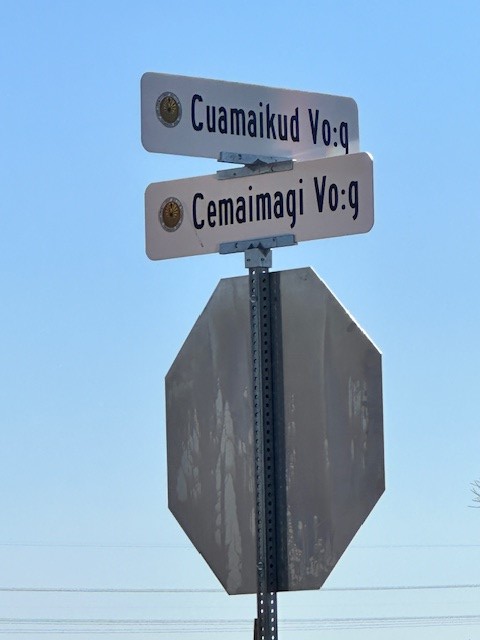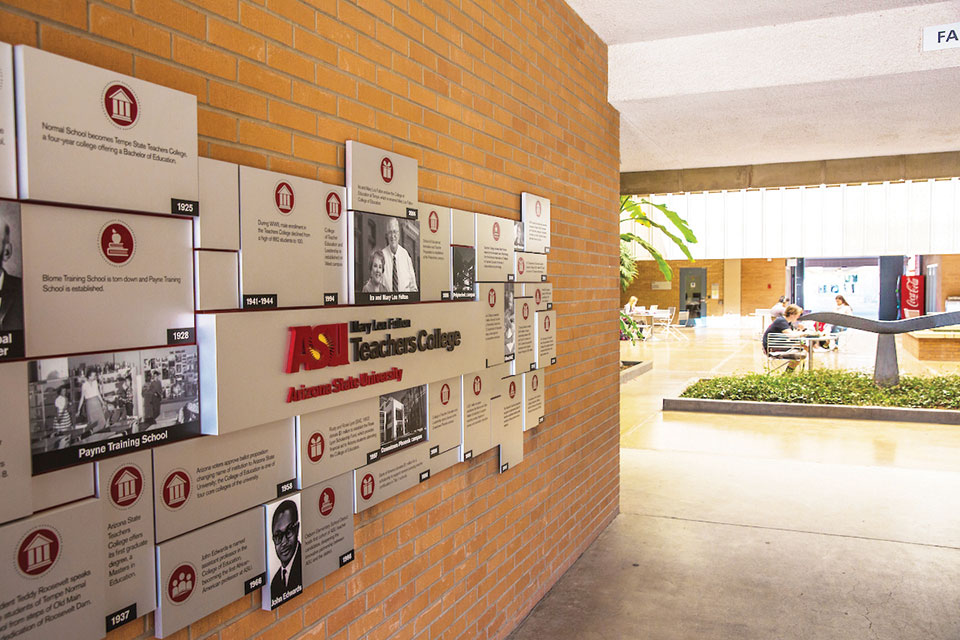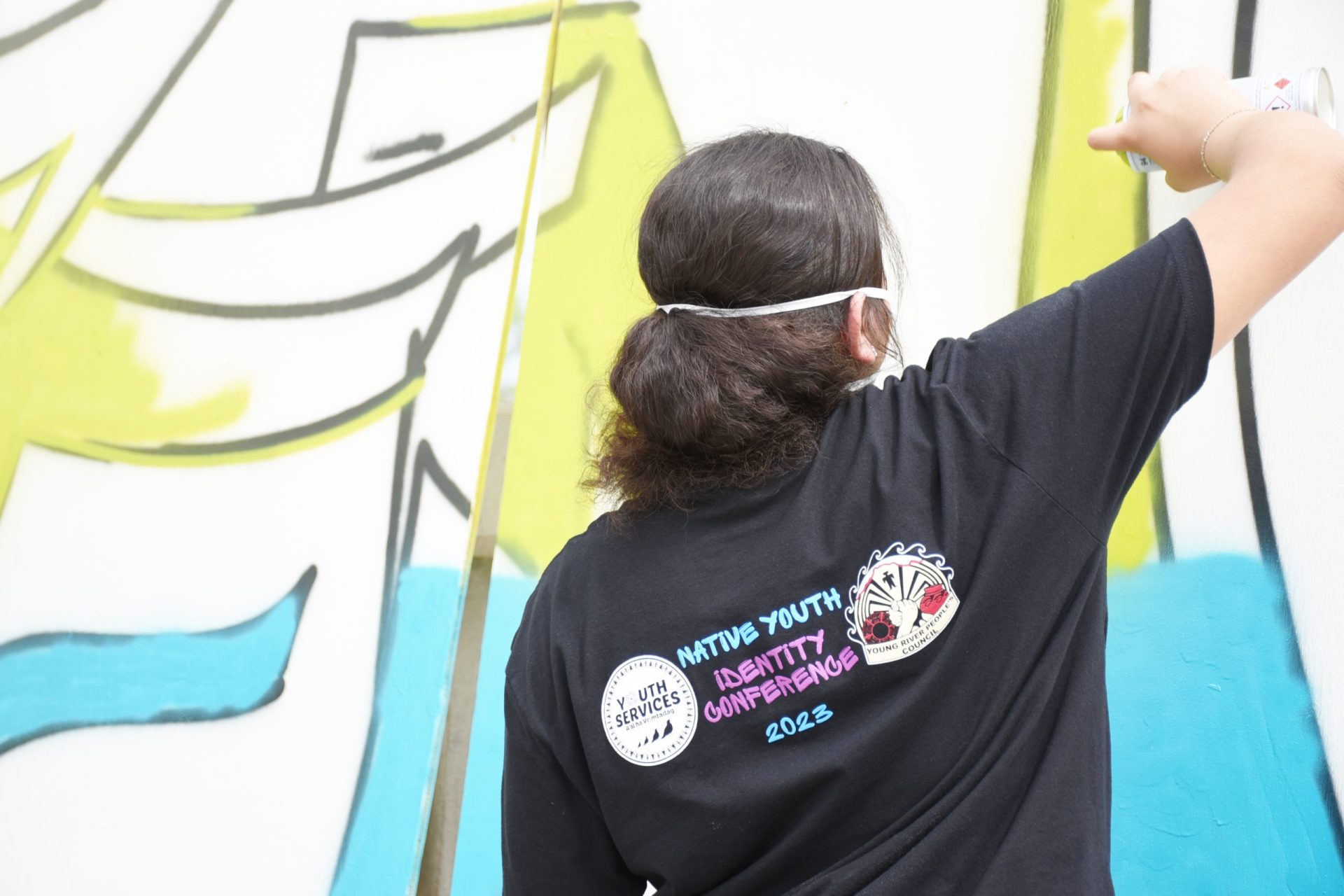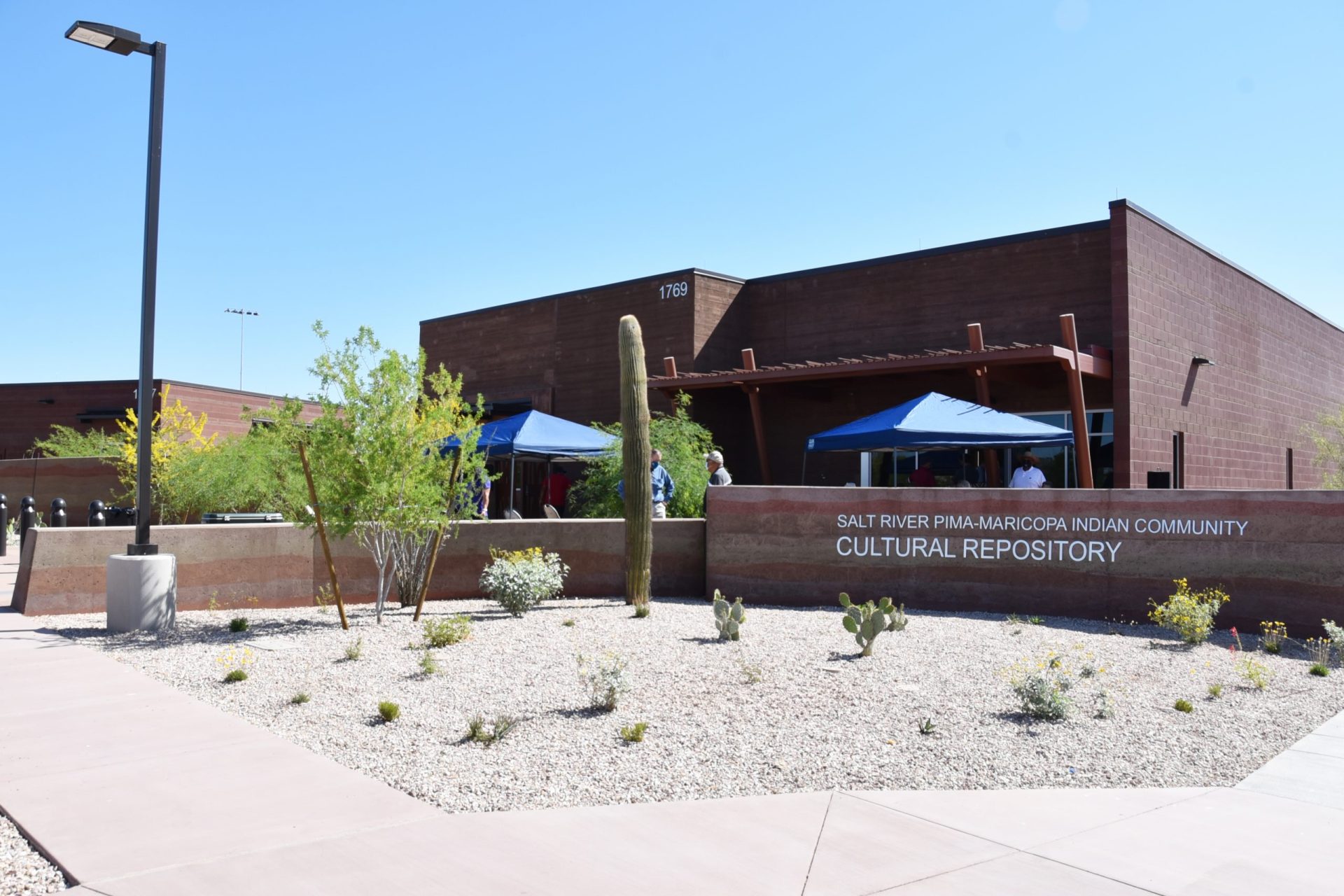VIEWS: 616
April 2, 2024New O’odham Language Street Signs Installed in Community
To more accurately reflect the cultural and historical significance of certain areas of the Salt River Pima-Maricopa Indian Community, five new street names featuring words in the O’odham language have been installed in two areas of the Community.
The street signs were posted in the ground on February 1 in the Cemaimagĭ Subdivision (formerly the Monte Vista Subdivision) off North Extension Road, and at Temporary Housing Site F, off North Country Club Drive.
At the Cemaimagĭ Subdivision, the new street names are Cemaimagi Vo:g (Horned Toad Road), Matai Vo:g (Ashes Road) and Cuamaikud Vo:g (Roasting Pit Road). At the Temporary Housing site, the new street names are Ceul Vo:g (Willow Road) and Hiosig Vo:g (Flower Road).
Matai:
Hiosig:
Cemaimagi:
Ceul:
The new street names are a result of an SRPMIC Council resolution signed on November 30, 2022. A Council work session in 2018 set policy guidance on Native language street names, which the roadways in the subdivision all qualified for, according to Engineering and Construction Services Department (ECS) Design Division Manager Rueben Malin, GISP.
“The process is initiated once we receive a request from either the landowner(s)/resident(s) or from within the tribal government,” said Malin.
“As of now, the policy states that a roadway qualifies as long as it does not already exist elsewhere in the Community. If a road meets this requirement, we can start the process of looking into finding an approved O’odham or Piipaash street name.”
The criteria for the chosen words are that they be easy to pronounce, have no special characters and do not exceed a set number of characters due to the space available on street signs.
Recommendations for street names of significance to the geographic area of the roadway begin with the Cultural Resources Department (CRD). After reviewing the plan, if there are no recommendations, there is an approved list of names for ECS to choose from.
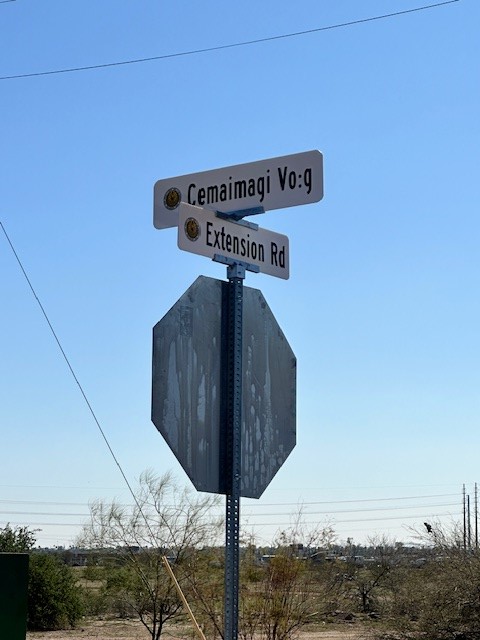
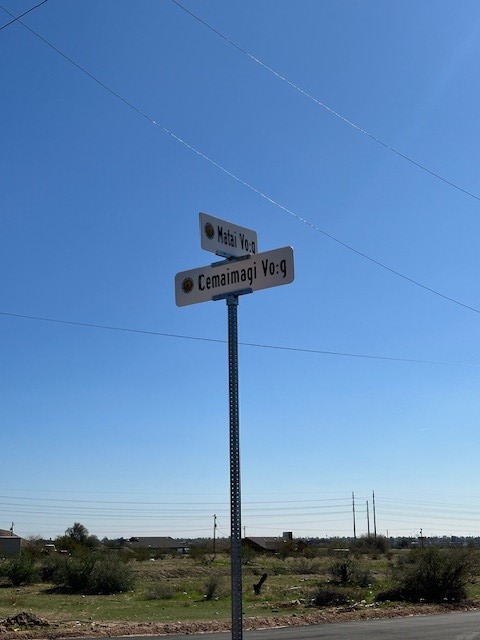


According to Malin, the name Cemaimagi Vo:g (Horned Toad Road) was selected because, during the archaeological process, a horned toad effigy carved out of stone was found on the floor of a pit house. Matai Vo:g (Ashes Road) was selected because the soil in the area is very dark, almost black, due to the amount of ash and charcoal-filled roasting features. Cuamaikud Vo:g (Roasting Pit Road) was selected because there were so many roasting pits found in that area.
“Once a street name is selected, we get consensus from the stakeholders, the Salt River Police Department, the Salt River Fire Department, CRD, Community Development Department (CDD), Public Works (PW), ECS and residents and/or landowners,” said Malin. “We then take it through the public process, the Land Management Board and Council.”
Malin said that when new street signs are implemented, the ECS Design Division sends an address letter to the residents affected by the change. The division then notifies the appropriate parties of the change, such as Emergency Services, PW, ECS, Saddleback Communications, the U.S. Postal Service, Salt River Project, SRPMIC Membership Services and third-party mapping services such as Apple, Google and Here. SRPMIC residents are responsible for implementing the changes with CDD Membership Services, their service providers, on their driver’s licenses, and with any other private services they might have.

